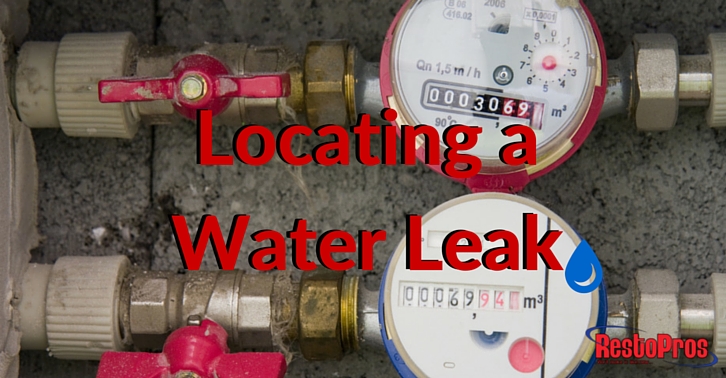 Mold starts growing as soon as humidity and temperature reach a point that’s hospitable for it to do so. Just after a storm is the perfect time for mold, fungus, and mildew to start growing and spreading more spores into the air. Keeping your air drier (at roughly 45% humidity) can help mitigate and mold growth, but if surface moisture from leaks is present, it won’t prevent mold from growing. The best recourse (especially after a storm) is to run a quick check of your home to look for leaks.
Mold starts growing as soon as humidity and temperature reach a point that’s hospitable for it to do so. Just after a storm is the perfect time for mold, fungus, and mildew to start growing and spreading more spores into the air. Keeping your air drier (at roughly 45% humidity) can help mitigate and mold growth, but if surface moisture from leaks is present, it won’t prevent mold from growing. The best recourse (especially after a storm) is to run a quick check of your home to look for leaks.
Finding a water leak is never a fun event, but it’s better to find the leak before it leads to damage or an expensive water bill.
Plumbing Leak Detection
First, you should identify whether or not you have a leak within your plumbing system. Make sure that no water is running in your home. If that means turning off water to toilets and the water heater, then do so. Go out and take a look at your water meter (a quick call to your utility billing department can tell you where the meter is) and take a look at the dial. If it isn’t moving, then no water is flowing through the system.
If the dial does show movement, then you have a leak somewhere. Turn off the water at your home’s main shut-off valve. This will cut off all water inside the home. Check the meter again, if the dial is still moving, then the leak is outside of your home. Otherwise, the leak is indoors (not a simply problem).
Pressure Leaks:
Water heading toward a faucet, shower head, or even a toilet is under pressure. If there’s a leak here, it’s usually pretty obvious. Constantly filling toilets, dripping sinks, or puddles of water will become apparent very quickly if the leak is on a pressurized side of your plumbing system. A quick visual inspection of your home should reveal the leak.
Return Water:
Returns from fixtures, faucets and appliances are usually gravity assisted, rather than being pumped away. This makes finding a leak from waste-water lines incredibly difficult. The signs of a return-line leak are usually caused by puddles, warping floorboards, and stained walls. To find a leak that hasn’t caused any damage yet, you’ll need a professional to examine your home for the leak.
Once you’ve fixed all the leaks you can find, test the water meter again. If you’ve fixed everything, the dial will stay steady and won’t show any water moving through the pipes of your home.
Roof Leak Detection
Of course, water leaks aren’t always from faulty plumbing or fixtures in your home. During and just after a storm, roof leaks are most evident. Inspecting your roof after a storm is always important to help identify any damage sustained from high winds, hail, or pooling water in the crevices and valleys of your roof.
A visual inspection of your attic and roof is really the best way to find a leak. Use a pair of binoculars to inspect the roof for damaged shingles, rubber seals around vents and exhausts, and inspect gaskets for damage. You might need to climb onto the roof for a closer inspection if you’re worried about possible damage or there are places on your roof you can’t see from the ground. Take a moment to inspect the gutters and any joins for pooling water or trapped debris. If water is pooling, it will find its way into your home eventually.
If you’re in the middle of a storm, or have just finish one, enter your attic with a flashlight and shine it around the ceiling. Any water will reflect the light and highlight drips or leaks. Be sure to follow any leaks to their source, as the drip is usually not the location of the leak.
Once you’ve found the source of the leak, mark it clearly. Wait until the roof dries off, then climb on top of your roof. Have someone tap loudly on the leak location so you can find it from the other side. Inspect the site for damage and repair as necessary. If you can’t find the source of the leak yourself, it’s best to call a professional repair before the next storm occurs.
PRO TIP: If you know your roof is leaking, but there’s not a storm in sight, use a little water from a hose to help find the source of the leak. Keep someone inside the attic with a flashlight so they can find where the leak is coming from while you water the roof. BE CAREFUL, and make sure you leave a dry area to climb down safely.
Don’t forget to follow RestoPros on Facebook, Twitter, LinkedIn, and Google+ for new Updates, News, and Discounts!
